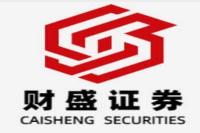LG Innotek's Glass Core Substrate (GCS) Ambitions: A New Era for Display Technology
Meta Description: Explore LG Innotek's ambitious foray into Glass Core Substrate (GCS) technology, its potential to revolutionize display manufacturing, and the crucial partnerships driving its success. Discover the benefits, challenges, and future implications of this groundbreaking innovation.
Introduction:
The global display market is in a constant state of evolution, with manufacturers relentlessly seeking innovations to enhance performance, reduce costs, and cater to the ever-growing demand for thinner, lighter, and more immersive screens. Enter Glass Core Substrate (GCS), a cutting-edge technology poised to revolutionize display manufacturing and unlock a new era of visual experiences. Leading the charge in this exciting field is LG Innotek, a renowned electronics component specialist known for its prowess in mobile displays. LG Innotek's ambitious pursuit of GCS technology is a testament to the company's commitment to pushing the boundaries of display innovation.
LG Innotek's commitment to GCS is not just about keeping up with the Joneses; it's about leading the pack. They're not just building a new supply chain; they're building a new era for displays. Think about it: GCS is more than just a new material, it's a whole new way of thinking about display manufacturing. It's about making screens thinner, lighter, and more durable than ever before, while opening up a world of possibilities for new form factors and applications.
This article delves into the world of GCS, examining LG Innotek's ambitious plans, the partnerships driving its success, and the potential impact of this technology on the future of displays. We'll explore the benefits, challenges, and future implications of GCS, providing a comprehensive understanding of this groundbreaking innovation.
Understanding Glass Core Substrate (GCS)
What is Glass Core Substrate (GCS)?
GCS is a revolutionary substrate technology that replaces the traditional glass used in display panels with a thin, flexible, and incredibly strong glass core. This core acts as the foundation for the entire display, providing structural integrity and enabling the use of thinner and lighter materials.
Advantages of GCS:
- Thinner & Lighter Displays: GCS allows for significantly thinner and lighter displays, opening up new possibilities for foldable, rollable, and flexible form factors.
- Enhanced Durability: The glass core provides superior strength and resistance to scratches and impacts, making displays more durable and resilient.
- Improved Display Performance: GCS can enhance display performance by enabling higher resolutions, wider viewing angles, and faster refresh rates.
- Cost Reduction: GCS can potentially reduce manufacturing costs due to its lighter weight and simplified production processes.
The Power of Partnerships:
LG Innotek understands that building a robust GCS supply chain requires a collaborative approach. The company is actively engaging with leading materials, component, and equipment partners to ensure the successful implementation of its GCS vision.
Key Partnerships:
- Materials Suppliers: Partnering with leading glass manufacturers to develop high-quality, ultra-thin glass cores that meet the demanding requirements of GCS technology.
- Component Suppliers: Collaborating with companies specializing in thin-film transistors (TFTs), color filters, and other essential display components to ensure seamless integration with the GCS platform.
- Equipment Manufacturers: Working with advanced equipment manufacturers to optimize production processes and ensure high-yield, cost-effective manufacturing of GCS-based displays.
Challenges & Opportunities:
While the potential of GCS is undeniable, there are a few challenges that need to be addressed:
- Technical Complexity: GCS technology requires advanced manufacturing capabilities and rigorous quality control to ensure consistent and reliable performance.
- Cost Optimization: Scaling up GCS production to meet mass market demand while maintaining cost competitiveness is crucial.
- Market Adoption: Educating consumers and manufacturers about the benefits of GCS and fostering its adoption is essential for its widespread success.
The Future of Displays: A GCS-Powered World
LG Innotek's commitment to GCS signals a significant shift in the display industry, paving the way for a new era of thinner, lighter, more durable, and more feature-rich displays. Here are just a few of the exciting possibilities that GCS unlocks:
- Foldable and Rollable Displays: GCS enables the creation of flexible displays that can be folded or rolled up, opening up new possibilities for mobile devices, laptops, and home entertainment systems.
- Wearable Displays: The thin and lightweight nature of GCS makes it ideal for wearable displays, such as smartwatches, augmented reality glasses, and even clothing.
- Automotive Displays: GCS can enhance the user experience in vehicles by enabling larger, more immersive displays for navigation, entertainment, and driver information.
- Large-Format Displays: GCS can be used to manufacture large-format displays for digital signage, commercial displays, and even home theaters, offering stunning visuals and enhanced viewing experiences.
The Impact of GCS on the Global Display Market
GCS technology has the potential to transform the global display market, driving innovation, creating new opportunities, and shaping the future of how we interact with technology.
- Increased Competition: GCS will likely lead to increased competition within the display industry, as manufacturers strive to adopt the technology and differentiate their offerings.
- New Market Opportunities: GCS will create new market opportunities for companies involved in materials, component manufacturing, and display equipment.
- Enhanced Consumer Experiences: The benefits of GCS, such as thinner displays, enhanced durability, and improved performance, will ultimately lead to enhanced consumer experiences.
FAQs
Q1: What is the timeline for widespread adoption of GCS technology?
A1: While GCS is still in its early stages of development, industry experts predict that it could start to gain mainstream adoption within the next few years. LG Innotek's aggressive expansion of its GCS supply chain suggests that the company is aiming for a rapid rollout of the technology.
Q2: Are there any concerns about the potential environmental impact of GCS?
A2: As with any new technology, it is important to consider its environmental impact. LG Innotek is committed to sustainable manufacturing practices and is actively working with its partners to minimize the environmental footprint of GCS production.
Q3: How will GCS affect the prices of displays?
A3: While the initial cost of GCS technology may be higher due to its complexity, the long-term benefits, including potentially lower manufacturing costs, could lead to more affordable displays in the future.
Q4: What are the key applications of GCS beyond smartphones?
A4: The applications of GCS extend far beyond smartphones, including tablets, laptops, wearable devices, automotive displays, and large-format displays for commercial and residential use.
Q5: How does GCS compare to other emerging display technologies like OLED and MicroLED?
A5: GCS complements existing display technologies like OLED and MicroLED, offering advantages in terms of durability, flexibility, and potential cost reduction.
Q6: Will GCS technology eventually replace traditional displays entirely?
A6: While GCS has the potential to revolutionize the display industry, it's unlikely to completely replace traditional displays in the near future. Different display technologies will coexist, each offering unique benefits for specific applications.
Conclusion:
LG Innotek's bold pursuit of GCS technology marks a pivotal moment in the evolution of display technology. The company's ambitious plans, coupled with strategic partnerships, are laying the foundation for a new era of displays characterized by thinner, lighter, more durable, and more feature-rich experiences. As GCS technology matures and gains wider adoption, it promises to transform the way we interact with technology, blurring the lines between digital and physical worlds and opening up a world of possibilities for innovation and creativity.



